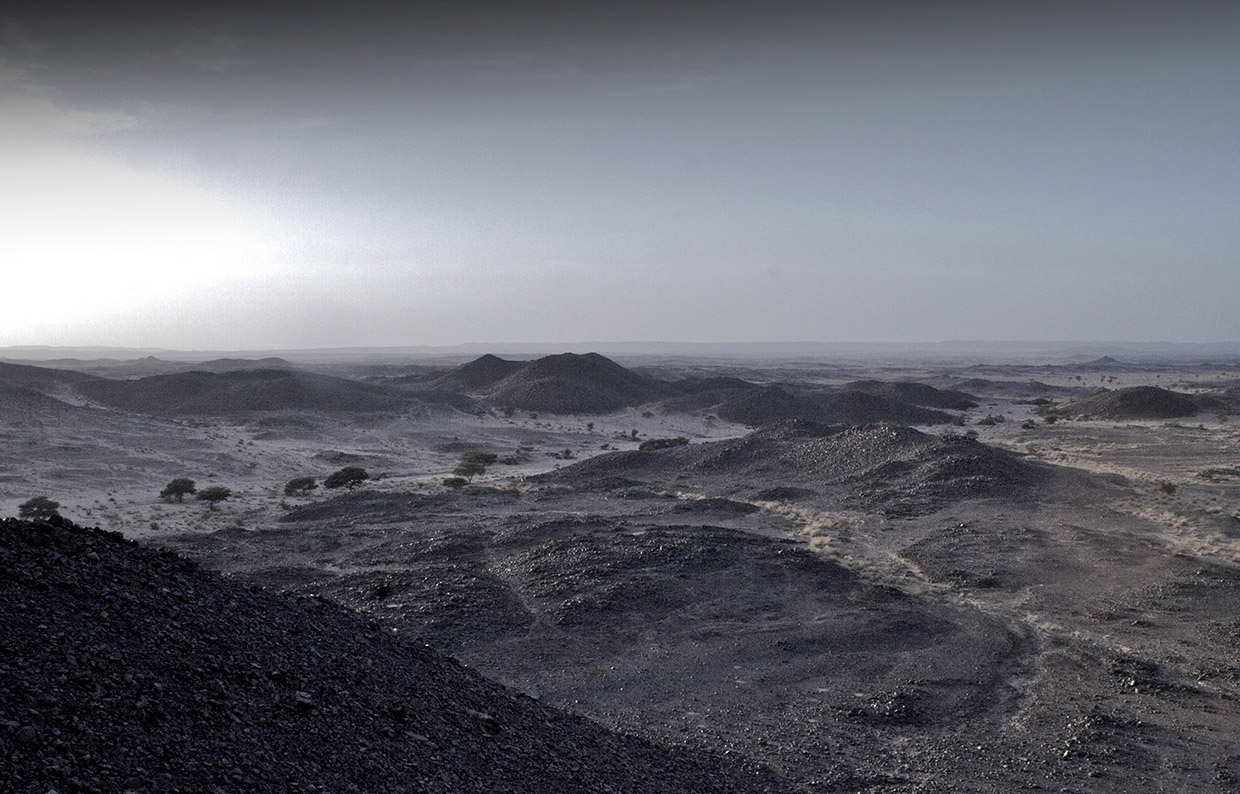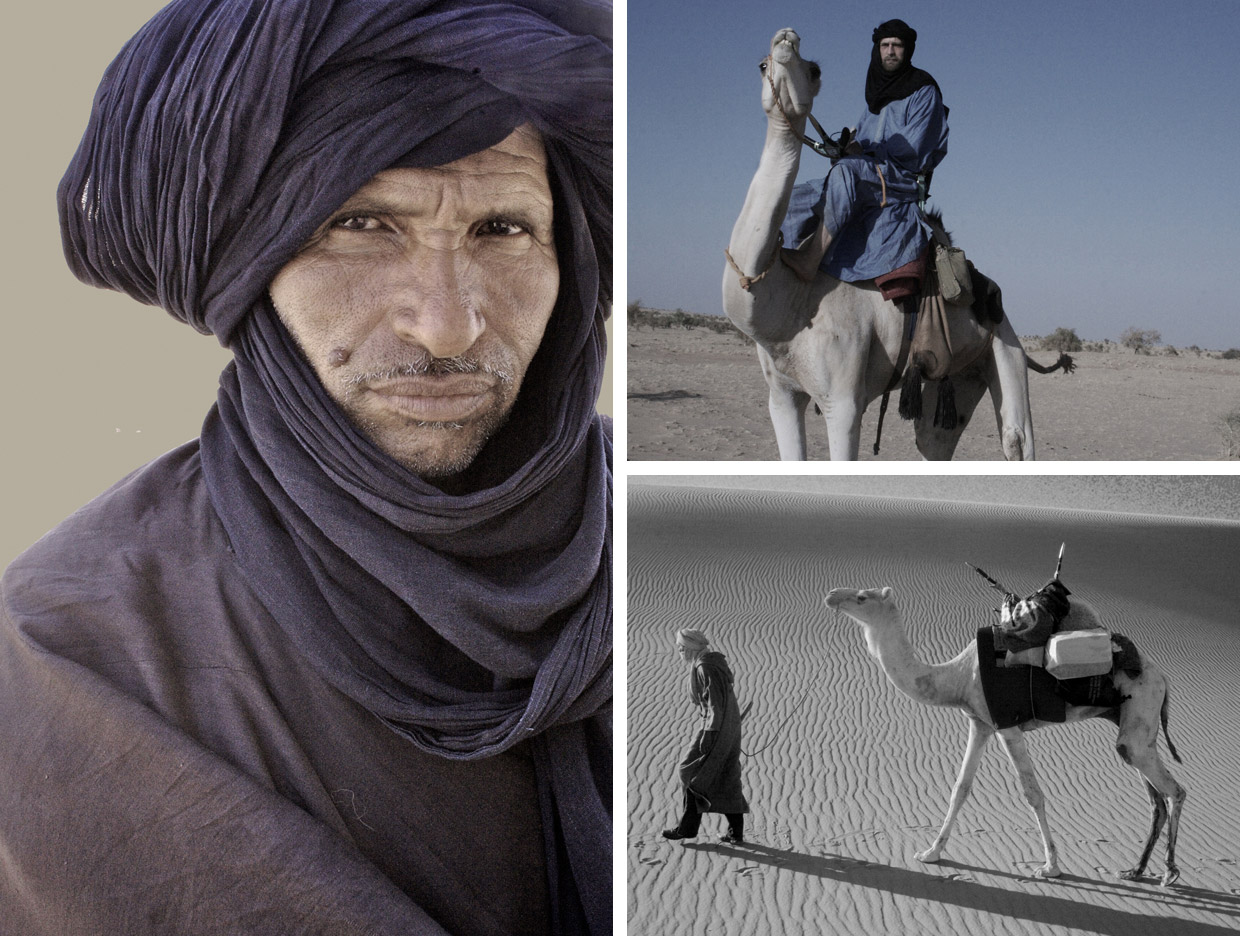To Tibesti
An Interview with Jeremy Curl
Jamie Bunchuk

We managed to catch Jeremy mid-packing for his latest adventure in Chad, to ask him about the expedition currently now in progress, what to look for in a good camel, and how he plans to avoid being kidnapped in one of the most unpredictable regions of Northern Africa.
Hi Jeremy. Thanks for chatting with us. Let’s please start with your upcoming project; could you perhaps tell us what the new expedition’s all about?
Well this expedition I am about to set off on has two main goals. The first objective is to document 10,000-year-old rock art in the Tibesti Mountains in the Sahara. The art is in an extremely remote part of the desert in the far north of Chad and whilst there has been previous expeditions to the region (although only a handful in the last 100 years), there has never really been a comprehensive look at what’s there. So I’m going to document this art on behalf of the Bradshaw Foundation, which is an organisation dedicated to persevering rock art around the world. My main aim will to be to go the Tibesti Mountains to photograph and measure the art I can find and plot their GPS coordinates.
The secondary goal is to document the Teda tribe who live in these mountains and have continued their way of life unchanged for thousands of years, much like their enemies the Touareg who I have also travelled with. So that’s the idea, although things could go quite differently to how it’s been planned because it is such an unstable part of the world; absolutely crawling with bandits. There are land mines and all kinds of other nasties to watch out for too. Because Chad is such a failed state, they have no control of what goes on there. So whereas some might think you’d be able to take a Land Rover to this mountain range it’s definitely not a good idea in my view, because of the rife hijacking and banditry.
Instead, I am going to walk and take camels about 600 miles from Chad’s capital N’Djamena to the mountains. It sounds like a gimmick but to me I think it is the best way of getting there relatively unharmed. This is because you can blend in very easily with the local population walking with camels, away from the main thoroughfares. Additionally, there are no tire tracks for potential kidnappers to follow. So for me, camels and walking is probably the safest way and this suits me perfectly because that’s how I’ve always travelled.
Are you going solo?
It’s only me going there, but I will find a guide when I’m in the mountains. This is because the region is so heavily land mined that I really need to rely on local knowledge as to where to tread and where not to tread.
How long will the expedition last?
This is all guesswork because no one’s really done it before, but I believe it will take me about a month of walking to get there. Then, ideally, I’d like a month in the mountains exploring the rock art and then it would be a month to come back. So I figure more or less three months in total.
What aspect of the journey are you most apprehensive about?
For starters, when I arrive in the country I’m bringing camera equipment in with me and cameras are illegal unless you have a special permit. So that’s one bureaucratic article to overcome, along with satellite phones, which are not allowed either. I also need documentation and permission from the government to go into the mountains themselves, which will require more wrangling and probably a bit of corruption along the way and, as ever, more paperwork. So that’s the boring nitty gritty to get done and I have no doubt it will be an absolute pain, all before I can even begin the journey.
It is also quite an aggressive part of the world and the chances of kidnapping are relatively high. History has shown that when Western researchers go to this area they normally end up detained by some nasty chap or other. So that is big a concern for me. Lastly, there’s the dangers of desert travel itself, just making it from well to well with enough water in time. I have had experiences in the past where you ration yourself so heavily with water – there’s only so much you can bring with you on your camel – and drink so little in order to be able to make your rations last, that it really pushes you to the limits of your thirst. On top of that, you have no idea when you arrive at the next well what condition it is going to be in. If you haven’t passed anyone on the way who can give you the necessary information you might arrive to find the well is dry or muddied or too salty. That’s always a concern; water, water, water, water.
One goal is to document the Teda tribe who live in these mountains and have continued their way of life unchanged for thousands of years, much like their enemies the Touareg who I have also travelled with.

My hero is Wilfred Thesiger and I’ve known about the Tibesti Mountains for a long time because I read his book Arabian Sands. In one of the introductory chapters he talks about when he was living in the Sudan in the 1930s and took a trip and walked around the Tibesti mountains. It sounded like such a bleak and unusual place; really otherworldly.
you’re bringing camels with you on your expedition. What do you look for when buying a camel?
Well for this kind of expedition, the bigger and stronger the camel, the better. If they’re big and strong you obviously have to pay a premium for that, but I’ve had experiences with small camels in the past and they don’t tend to last because the nature of work is inherently very heavy and very strenuous. We’ll be walking for about 12 to 18 hours a day and the camels will be carrying a lot of kit. So strength is a main concern. The other thing to look for is that the camels you’re buying are pretty well trained. You can waste an awful lot of time buying a nice big camel that turns out to be completely unruly and won’t do as you want it to do. That can result in quite dangerous situations when you have take water or gear off its back and it won’t lie down for you to be able to do that.
I had a firsthand experience of this issue in northern Kenya when I bought two animals that weren’t very well trained. They were scared by a noise and – through a combination of bad timing and bad training – they ran off and I spent two days without them or any kit, literally just following their tracks in the sand trying to catch up. That was probably the closest I came to thinking that I was about to die, lying under a bush casually wondering if anyone would reuse my clothes. It is not an experience I would wish on anyone. Without water and without food on the back of a camel you’re absolutely screwed, so you have to make sure that camel is pretty reliable, because that’s your lifeline.
And you’re also filming this trip for television, is that correct??
Yeah. There’s a production company called OutWildTV and they are paying for the expedition in order that I film it with the equipment they’ve given me so that they can produce a programme in some form or another.
How do the added film commitments stack up with everything else you’ll have to be doing?
Well this question has been troubling me a little bit because normally when I travel, I go extremely light. I take one little bag and it might just have a single change of clothes in it, a camera, a medical pack and that’s it, nothing else. So this time I’ll have all that stuff to take, obviously, but then I will also have a big bag full of camera equipment. On top of that, I’ll have all the worries of trying to film people, because if you take out a camera to photograph them – well that’s difficult enough – but to actually start video-recording these tribes, I think that will be quite difficult indeed.
Filming also makes you a much bigger target for bandits because of the expensive equipment you’ll be flashing. The last and final worry is that I hope this camera equipment survives, because sand really does destroy anything hi-tech. Especially if it’s being carried on the back of a camel; camels fall over all the time, or things drop off the back of them and are never seen again. So all in all, it will be interesting to see if the kit can actually survive the journey!
One last question from us, why is this project important to you?
It’s important for a few reasons actually. My hero is Wilfred Thesiger and I’ve known about the Tibesti Mountains for a long time because I read his book Arabian Sands. In one of the introductory chapters he talks about when he was living in the Sudan in the 1930s and took a trip and walked around the Tibesti mountains. It sounded like such a bleak and unusual place; really otherworldly. It’s black and it’s volcanic and there’s hardly anything that grows there. I think locally they call them the Mountains of Hunger. That description immediately caught my eye. Added onto that, these mountains are one of the few places remaining where if you Google them, you end up predominately getting satellite imagery, which for me is a really good sign that hardly anyone goes there. It’s so wild and so remote and I’m immediately attracted to that. There are very few places left in the world you can go to now, outside perhaps Antarctica, that people hardly ever visit. So for me, that’s the draw.
For more information about Jeremy, his current and his previous expeditions, please visit: www.jeremycurl.com. For on-the-go updates on the Tibesti Expedition, please follow him on Twitter @jcurlexplorer.


